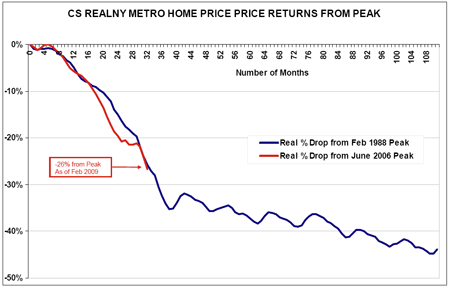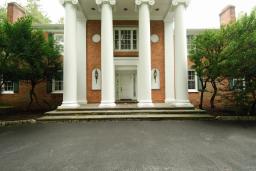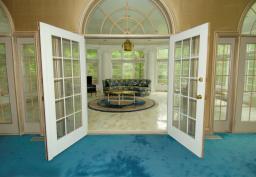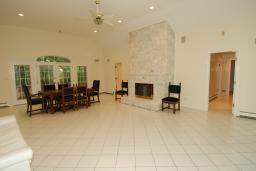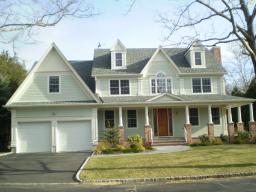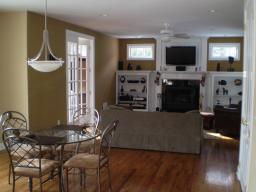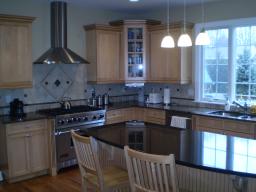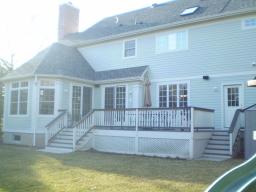Matt Woolsey from Forbes is reporting on the performance of the Mendham real estate market (an affluent Northern NJ suburb for those not familiar) as part of the Forbes Luxury Housing Index. The index is based on zip code data provided by Altos Research.
Anyhow, the report says that Mendham prices have increased 9.8% year over year (I’m assuming mid-April). Transaction activity in that zip is so small, I’m not sure if the sample size makes for any kind of meaningful statistic. In all of March, Mendham Boro and Twp saw 5 closed sales, year to date we are looking at 24.
Anyhow, I pulled the stats from the MLS to see what all the hoopla was all about. I didn’t find it.
Mendham Boro Closed Sales Average Sales Price
March 2008 – $655,000 (4 sales)
March 2009 – $500,833 (3 sales)
Prices down, but with that small sample size the number is meaningless.
YTD 2008 – $686,111 (9 sales)
YTD 2009 – $1,000,625 (8 sales)
Whoa! That must be it. Look at that increase in sales price! Let’s take a look at Mendham Twp.
Mendham Twp Closed Sales Average Sales Price
March 2008 – $2,910,000 (3 sales)
March 2009 – $399,500 (2 sales)
Prices down, but with that small sample size the number is meaningless.
YTD 2008 – $1,186,714 (21 sales)
YTD 2009 – $902,750 (16 sales)
Prices down, sample size is a little better here. I might be a bit more confident about this number
Ok, so what is up with that big jump in prices in Mendham Boro? Well, turns out that in February a $3.7 million home sold (one of two sold that month), and that is really pulling up that average.
Even if we look at the March contract data, to get the most recent indicator of the market, things don’t really look like prices are on the way up either.
Mendham Boro Contract Sales Average Last List Price
March 2008 – $1,077,667 (3 contracts)
March 2009 – $351,333 (2 contracts)
Keep in mind we’re talking about list prices here, we don’t know sale prices until the home closes. Same comment, sample size is tiny, the price change is noise.
Mendham Twp Contract Sales Average Last List Price
March 2008 – $2,614,667 (3 contracts)
March 2009 – $1,247,475 (2 contracts)
Same comment applies here.
I’m not sure what kind of magic data Altos has, or even how they could possibly get “real time” real estate data, but I’m not buying it. Even if they are basing their information on the current month contracts, which would be a very risky move, the sample sizes are so small in these towns that these median/average price changes are just statistical noise, up or down. This is one of the reasons you rarely see me talking about prices or sales volume changes on a town by town basis. Before you poo-poo me for ignoring the green shoots, this same report has Rumson home price *down* 30% in the same period.
From Forbes:
New Jersey Suburb’s Prices Holding Up
Mendham, N.J., is a small township of 5,000 residents 40 miles from New York City. With tree-lined streets and large, traditional houses on quiet, wooded acres owned by affluent residents–the median income is $145,000–it’s every bit the picture of an idyllic small-town suburb.
It’s got good schools and just-close-enough proximity to a big city to make it desirable, just like dozens of similar communities that fill the Tri-State, northern Chicago or Bay Area suburbs.
However, as the nation’s real estate market declines, Mendham has been one of the best performers in the Forbes Luxury Housing Index, which ranks the 500 most expensive ZIP codes in the country, using real estate statistics provided by Altos Research, a Mountain View, Calif.-based real estate derivates research firm. What’s stirring in Mendham? Why are prices up 9.8% from this time last year?
The whole of 2008 was a very slow year. While early 2009 has been an improvement so far, it’s still well behind sales rates of 2006 and 2007.
Brokers say that the depressed market has area homeowners pulling their homes entirely rather than trying to find sellers. Last year at this time there were 76 homes listed for sale while this year there are 105.
That’s a higher inventory, but in a wealthy marketplace where the median income is $145,000 and distressed homes are virtually nonexistent (Mendham has only three foreclosures, according to RealtyTrac), it’s also a sign of sellers’ increased confidence in finding a buyer.
“In 30 years, I’ve never had as bad a year real estate wise as I did last year,” says Betty Kiser, a broker at Coldwell Banker. “2007 was a really good year, but in 2008 it fell apart.”
Sadly, it’s not yet time to ring the recovery bell. Prices are still off from 2006 and 2007, by between 15% and 20% according to local brokerages, and still sliding a bit. According to our index, the median price has fallen to $1.26 million from $1.275 million in the last week. This calculation is a rolling average of the previous 90 days.
